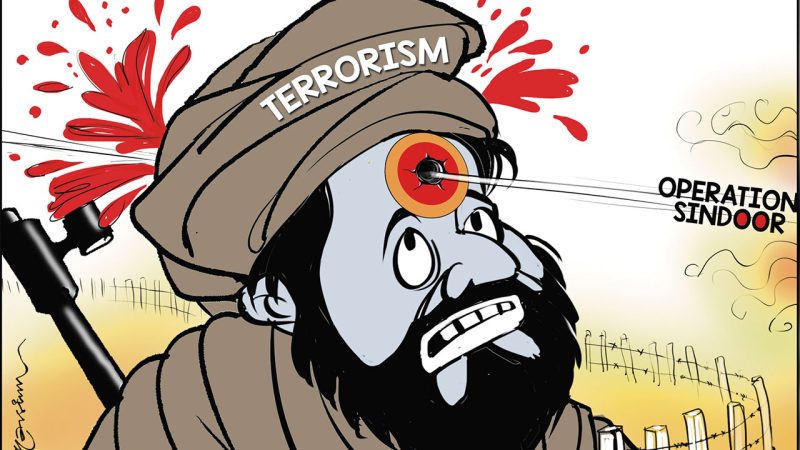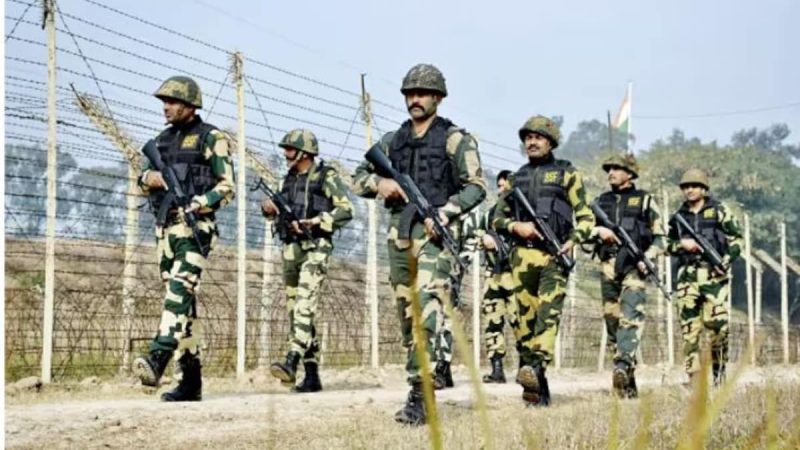Opinion: Judiciary-Legislature clash not unique to India

Threats like Executive interference and media attacks are universal, but the Supreme Court’s resilience remains critical
Published Date – 7 May 2025, 08:03 PM

By Geetartha Pathak
The recent statements by Vice President Jagdeep Dhankhar and BJP MP Nishikant Dubey highlight a sharp escalation in political resistance to the Supreme Court, particularly in response to its rulings on the Tamil Nadu Governor case and the Waqf (Amendment) Act, 2025. These statements reflect broader tensions over the Judiciary’s role in checking Executive and Legislative actions.
Dhankhar’s remarks, made from a high constitutional office, signal a rare and direct challenge to the Judiciary’s authority, framing it as overstepping its constitutional role. Nishikant Dubey, MP from Jharkhand, launched a scathing attack on the Supreme Court and Chief Justice of India (CJI) Sanjiv Khanna following the court’s scrutiny of the Waqf (Amendment) Act and the Tamil Nadu Governor’s case.
His comments came after the Centre assured the court on April 17 that it would not implement contentious provisions of the Waqf Act (eg, Waqf by User) until the next hearing. On April 19, Dubey posted on X that if the Supreme Court makes laws, then Parliament should be shut down. He accused the court of “inciting religious wars” and “taking the country towards anarchy,” holding the CJI “responsible for the civil wars happening in the country.”
SC’s Actions
The Supreme Court’s actions in striking down laws or issuing directives are grounded in its constitutional mandate to protect fundamental rights and the basic structure. Rulings like the electoral bonds case or candidate disclosures align with its role as a counter-majoritarian institution, checking the ruling party’s dominance. However, some political leaders frame these interventions as judicial overreach, arguing they encroach upon Parliament’s Legislative sovereignty or the Executive’s autonomy. This narrative appeals to their base, portraying the Judiciary as obstructing “popular will.”
The tension reflects a broader debate over the separation of powers. Critics like Dhankhar see the court’s use of Article 142 to issue far-reaching directives as blurring the lines between Judicial, Legislative, and Executive functions. Yet, the court justifies such measures as necessary to uphold constitutional morality when other branches fail. Dubey’s claim that only Parliament can make laws under Article 368 oversimplifies the Constitution’s checks and balances, ignoring the court’s role in invalidating laws that violate fundamental rights laid under Article 13.
The BJP’s public distancing from Dubey’s remarks, coupled with party chief JP Nadda’s clarification, suggests a strategic retreat to avoid alienating moderate voters or escalating a constitutional crisis. The BJP’s frustration with the court stems partly from rulings like the electoral bonds verdict, which exposed its funding sources, and candidate disclosure orders, which highlighted criminality in politics. Regarding electoral candidates’ credentials, the court’s judgements aim to enhance transparency and accountability in the electoral process. These decisions have fuelled perceptions among some BJP leaders that the court is targeting the ruling party’s interests.
Political Backlash
This is not the first time the judiciary has faced political backlash. Successive governments have attempted to circumvent court rulings through new laws or constitutional amendments. After the Golaknath case restricted Parliament’s power to amend fundamental rights, the Indira Gandhi-led Congress government passed the 24th, 25th and 42nd Amendments to restore parliamentary supremacy, only for parts to be struck down in the Minerva Mills case.
In the 1990s, the VP Singh and Narasimha Rao governments clashed with the court over reservations and economic reforms, but judicial independence prevailed through landmark rulings like Indra Sawhney (1992).
Dobbs and pro-Brexit media mirrors Nishikant Dubey’s accusation that the Indian Supreme Court incites “anarchy” by ruling against political interests (eg, Waqf Act scrutiny). Both reflect political frustration when courts reshape major policy areas
Political parties sometimes delay or inadequately implement court directives. Despite the 2002 and 2018 rulings on candidate disclosures, political parties across the spectrum continue to field candidates with criminal records, citing “winnability.” The court’s 2020 order requiring parties to justify such selections is often followed perfunctorily. The Vishaka Guidelines (1997) on workplace sexual harassment were only legislated as the POSH Act in 2013 after prolonged government inaction.
Ruling parties have been accused of influencing judicial appointments or delaying them to align the judiciary with their interests. The National Judicial Appointments Commission (NJAC) controversy and delays in clearing collegium recommendations (eg, Justice KM Joseph’s elevation in 2018) reflect such tensions. The government’s control over judicial infrastructure funding and administrative support can subtly pressure the Judiciary.
Global Case
The tension between the Judiciary and the political Executive or Legislature over unconstitutional laws and policies is not unique to India. Many countries with constitutional democracies have experienced similar conflicts, where courts exercise judicial review to strike down laws or executive actions, prompting resistance from ruling parties or governments.
The US Supreme Court is a global pioneer of judicial review, established in Marbury v Madison (1803), which empowered it to strike down laws violating the Constitution. This role has frequently led to clashes between the Executive and Congress, especially when rulings challenge politically sensitive policies.
In Roe v Wade, the US Supreme Court recognised a constitutional right to abortion under the 14th Amendment’s due process clause, sparking decades of resistance from conservative politicians and religious groups. State legislatures passed restrictive laws to circumvent the ruling, and Republican presidents appointed conservative justices to shift the court’s composition.
In Dobbs (2022), the court overturned Roe, holding that abortion is not a constitutional right, prompting backlash from Democratic politicians and progressive groups. President Joe Biden criticised the ruling as “an extreme and dangerous path,” while some Democrats, like Representative Alexandria Ocasio-Cortez, called for court-packing or limiting the court’s jurisdiction, accusing it of undermining democratic rights.
The UK Supreme Court, established in 2009, has a limited but significant role in reviewing government actions under the Human Rights Act 1998 and constitutional principles. Its rulings on Brexit exposed tensions with the executive. In the R (Miller) v The Prime Minister (2019) case, the UK Supreme Court unanimously ruled that Prime Minister Boris Johnson’s prorogation of Parliament during Brexit negotiations was unlawful as it prevented Parliament from exercising its constitutional functions. The court voided the prorogation, allowing Parliament to reconvene.
Johnson and Conservative MPs criticised the court as thwarting the “will of the people” (Brexit referendum). Pro-Brexit media labelled the justices “enemies of the people,” and some MPs proposed reforming the court’s powers or appointing pro-government judges. Johnson publicly disagreed with the ruling but complied, avoiding a direct constitutional crisis.
The Dobbs and pro-Brexit media mirrors Nishikant Dubey’s accusation that the Indian Supreme Court incites “anarchy” by ruling against political interests (eg, Waqf Act scrutiny). Both reflect political frustration when courts reshape major policy areas, with calls to curb judicial power. Threats like Executive interference, media attacks and appointment politicisation are universal, but judicial resilience, backed by civil society and international norms, remains critical. India’s experience, with its robust judicial review and ongoing political frictions, fits within this global spectrum.

(The author is a senior journalist from Assam)






